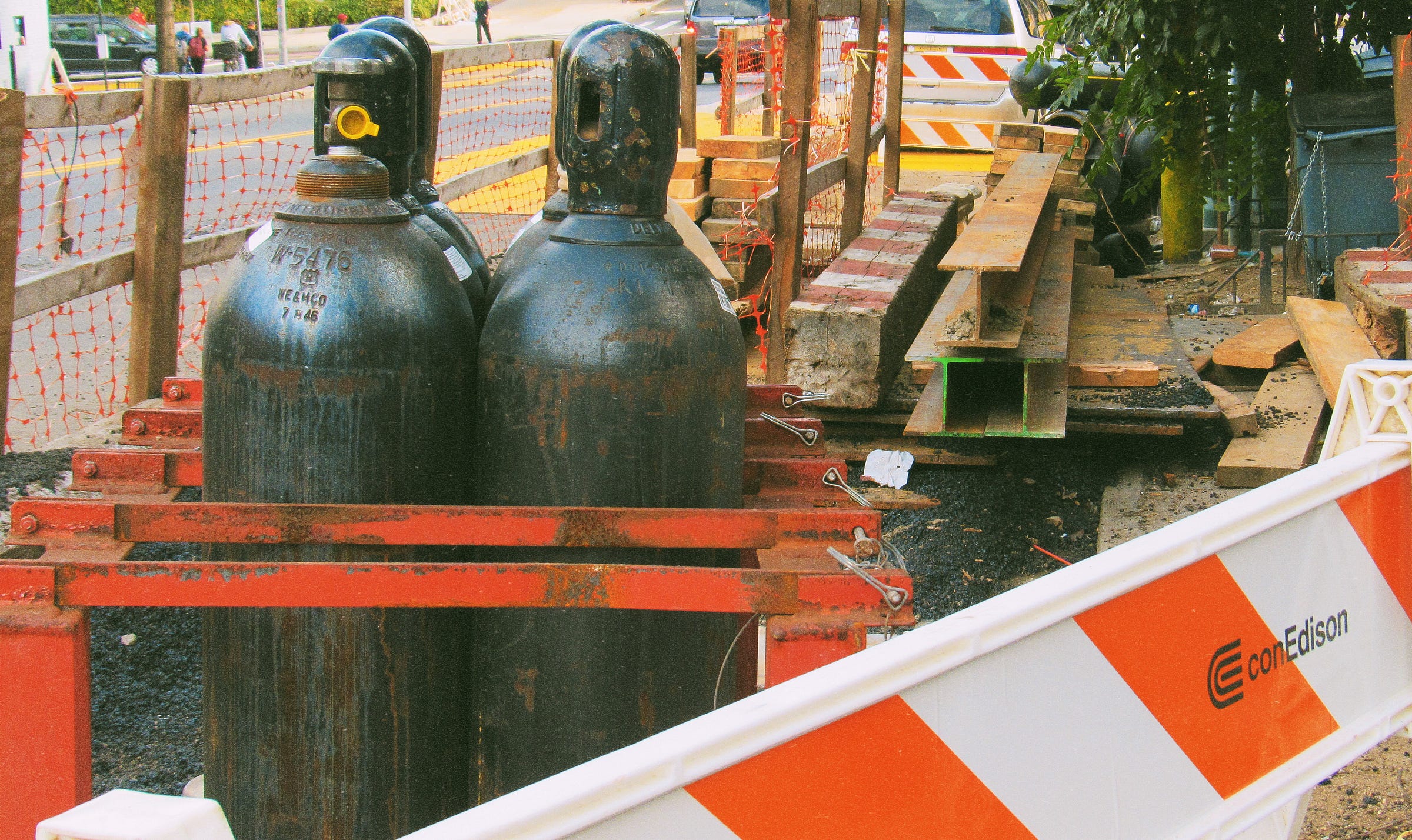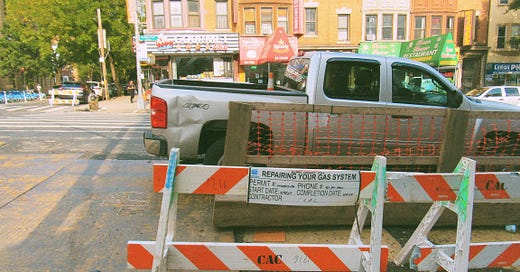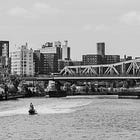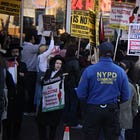On the Bronx gas explosion and New York City’s utility infrastructure
Role of Con Edison in N.Y.C.
Last week, a gas main exploded on Bedford Park Boulevard.
Community members described witnessing the explosion and the subsequent noxious fumes that emerged at around 10 a.m. on Sunday, Sept. 22.
My partner and I were away that weekend but returned early Sunday afternoon to the smell of gas and closed-off streets packed with police officers, firefighters, and Con Edison workers. We asked a worker what happened. “It was an explosion—a leak.”
The next day, I talked to bodega workers, including a cook who showed me his recording of the explosion while I waited for hot sandwiches. The cook’s video shows a huge, tall cloud of white fumes coming from the ground. As I looked through his video, another community member asked, “Are y’all talking about the gas leak we had yesterday?” We nodded, and he shared his version of events: seeing the smoke, people rushing, and the gas smells.
One neighbor mentioned that, at first, they believed they were seeing water, not fumes, rising from the ground.
Another described the pungency of the gas on the block and inside their apartment, even blocks away from the explosion.
Another described hearing a bang and then seeing orange-colored fumes.
Some businesses closed for hours.
Over 200 people evacuated a church service at St. Mary’s Orthodox Church.
At least three people were injured, including community members who inhaled fumes. Noxious fumes can be extremely harmful and poisonous, leading to pulmonary issues and death.
Twenty-four hours after the explosion, more than 500 people around Bedford still had no power.

With its gas alone, Con Edison serves over one million New Yorkers. Con Edison and the National Grid are the only two companies that provide gas to New York City, with the former being the sole provider of electricity.
Con Edison owns a lot of infrastructure throughout New York, with over 60 electrical substations. Underground, it has over 97,000 miles of cables, 268,000 vaults, and 43,000 transformers. Overground, it has over 34,000 miles of cable, 270,000 utility poles, and 52,000 overhead transformers.
The gas main that ruptured on Bedford Park occurred in my community, where we have had outage issues and smelled gas throughout our apartments and homes in recent months. We, like the rest of the borough and other areas covered by the company, are also facing higher gas and electricity bills. From a June Gothamist article:
Con Edison is an “investor-owned” utility but is still regulated by New York state’s Public Service Commission, which recently approved a significant rate hike for the company. Electric customers saw their bills jump by about 9.1% in 2023 and another 4.2% this year. In 2025 the bills will go up by 3.8%. The average monthly electric bill in New York City is about $190, up from $166 a decade ago, according to the PSC.
In August, Zionist Congressman Ritchie Torres released “An Investigative Report on Con Edison’s Overcharging of New Yorkers.” The 11-page report states that the company “provides the same service as National Grid yet imposes far higher delivery costs on its customers in the Bronx and elsewhere.” The report states that “ConEd charges the Bronx $1.29 per therm, Manhattan $1.01 per therm, and Queens $.92 per therm, whereas National Grid charges $.45 per therm and Brooklyn $.54.”
The higher our delivery costs, the higher the profits.
As utility costs rise, it’s important that we understand the corporate interests behind the price-gouging.
Officially known as Consolidated Edison Company of New York, Inc., the energy delivery system, founded in 1823, is “a wholly-owned subsidiary” of the larger investor-owned energy company, Consolidated Edison, Inc.
According to Yahoo Finance, the top shareholders of Consolidated Edison, Inc., include companies like Bl*ckrock, V*nguard, St*te Street Corporation, and B*nk of Am*rica. These same companies own shares in Quanta Services, Inc., one of two companies behind LUMA Energy, which is responsible for the distribution of power in Puerto Rico. These companies own shares in virtually every industry you can think of. Since October 7, 2023, many of us have also become familiar with the financial ties these companies—and Torres—have to the genocide in Palestine.
Additionally, Con Edison contributes to the contamination of our city. Their waste harms wildlife, plants, and our waters. On April 1, Con Edison announced that 1,000 gallons of dielectric fluid had accidentally leaked into the Bronx River from one of the company’s transmission feeders in Yonkers. According to the National Oceanic and Atmospheric Administration, this fluid is extremely harmful to wildlife: “Dielectric fluids may cause bird mortality by hypothermia from matted feathers. Greater risks to birds may result from large aggregations in the proximity of the spill.”
It is important to understand, as climate catastrophes continue, the role corporate interests play in harming our ecosystem.
It is important for us to understand who controls our infrastructure—trains, roads, buildings, buses, streets, institutions, utilities, and more—and the services we need to survive and live.
Their interests are not ours. They do not care about our rising costs for gas, electricity, food, healthcare, or housing. They do not care that countless communities across the five boroughs are left without hot water and electricity. They care about profit and power.
Connections We Must Make
In June of this year, 8,000 Con Edison workers threatened to go on strike.
They were protesting their working conditions and demanding better benefits, wages, safety measures, and job security. Soon after announcing their strike, they reached a contract deal with Con Ed.
These are the workers who maintain our utility infrastructure—engineers, administrative workers, technicians. Our workers were unsafe while profits for corporations and individuals continued. The conditions of these workers are deeply connected to the conditions we see all around New York City. They face exploitation at the hands of corporations with tremendous decision-making power and control over our lives.
All of this is connected to other infrastructure and surveillance issues happening around New York City. Our building walls are falling, housing costs are going up, buses, trains, streets, and bridges are crumbling, and there are increasingly more surveillance cameras on our corners.
We must also understand the struggles currently happening against these corporations and conditions.
Despite violence, our communities continue to fight.
Our communities are undeterred despite surveillance, violent arrests, cops on school campuses, officers shooting us on trains, from the pro-Palestinian movement to fare strikes to Haitian and Caribbean solidarity actions to land work in the Bronx.










